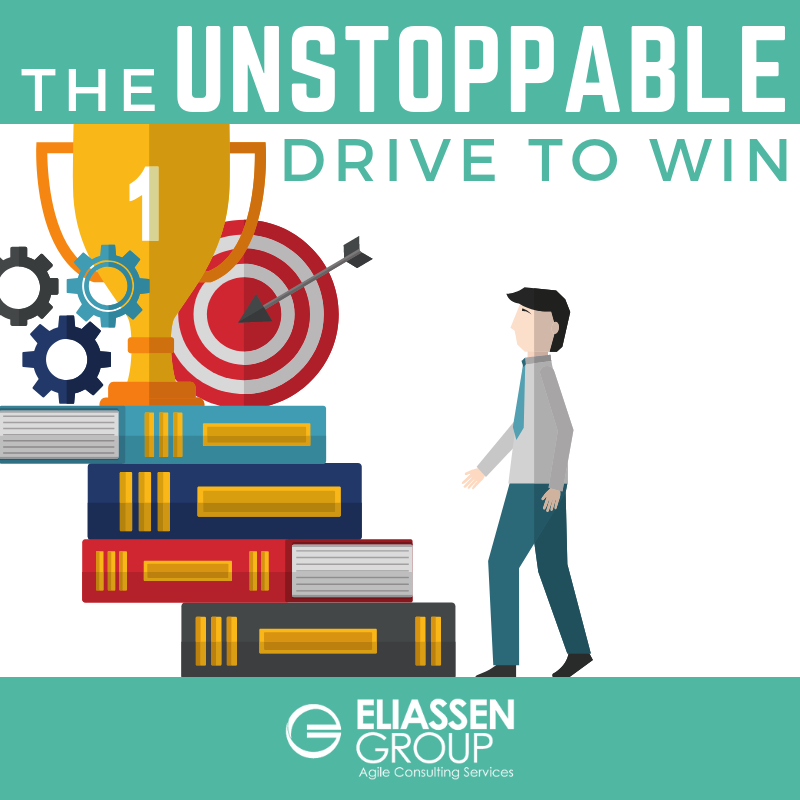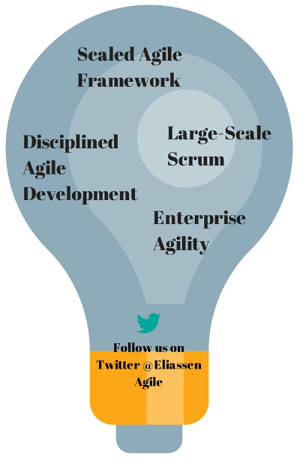Transformational change in organizations requires a razor focus on a future state that must draw leaders and employees out of their current world to embrace a different focus. Creating this pull to change involves fundamentally shifting how individuals understand their value and purpose, and in practice, this can be incredibly disorienting and look high-risk. However, the highest risk comes from continuing the same pattern and entrenching dysfunction.
As a leader, the only way to escape and shift the event horizon of your organization is to get in touch with better-orienting the human drive to win. If focused properly, the drive to win will lead to organizational greatness.
It’s Force of Nature – Just Win Baby!
The human desire to win is a fundamental force of human nature that, if left unchecked will, like a tree root, grow through anything in its path and crush it. Unlike trees, we do not always grow to expand. We often grow to protect as we compete for limited opportunities and resources. In organizations, we even hire based on people’s drive to win, but we do a relatively poor job at giving their drive a positive target.
As I recently learned all too well, if you want a tree to grow through the foundation of your house, have a leaky water line run too close the foundation. That 200-year-old oak tree will go straight through brick and concrete alike --- it’s a force of nature. Likewise, if you have a matrixed organization focused on siloed business capabilities, all of which are competing for the same set of resources, you’ve likely got your own foundation issues. If we do not address the drive to win by providing a clear productive path to channel it, even the best-intentioned transformation will crack.
We cannot afford to not consciously realize the unstoppable force of the human desire to win when designing transformation. It’s the guarantee of either success or failure. More often than not, it is ignored.
When the Desire to Win is Misdirected
I’ve been blessed to be part of some really interesting business transformation work that has spanned really complex problems. One of the more interesting challenges evolved out of a missed realization that a key business unit was ultimately losing traction in the market, and the consequences were disastrous for employees and the company alike. In the beginning, executives across the business agreed there was a serious market threat. Old power struggles between siloed “frenemies” faded, as everyone realized the reality and seriousness of the threat. It started with a bang, incredible market success, and then turned into rampant corporate cannibalism --- what happened?
The desire to win overcame the vision for a more competitive organizational future. As a result, what once seemed so promising and focused before grew in wild, unproductive directions, choking out the positive growth. The towering business success we were building became too attractive as a self-crediting opportunity. People left their positions at the ropes holding the fledgling structure up – The whole thing predictably started leaning to the left.
The drive to win, when still defined according the pre-transformation definition of success, triggered regression when there was too much ‘traditional’ unclaimed political capital on the table. The ‘old world’ drive to win caused the whole transformation to tilt, and it was never properly addressed. In an organization competing in the marketplace, the goal is to win customers by developing amazing products, develop market share, and gain revenue to stay ahead of the competition for the long haul. That is easier said than done, when so much of this natural desire to win is focused on winning scarce resources within the organizational structure. The results are predictable.
Unstoppable Force Meets Moveable Object – Focus on the Other Guy
At the end of the day, business is a competition. It feeds off our desire to win and build things of value for our customers. If the goal of business is to provide products and services of value to our customers, then our productive focus for our drive to win needs to begin there.
If the current state of your team, organization, or business isn’t what it needs to be in order to build awesome advantages for itself or your customers, then you are likely overvaluing the wrong things.
Without that fundamental understanding of ‘why,’ you’ll be unable to know ‘what’ to address, and installing new ‘systems of work’ is only part of the goal. The fundamental drive to win that has been molded by your previous way of working and succeeding will crush your change if left unchecked.
Ask yourself and your team these questions to start the process:
- What are we valuing today over and above our customer’s success?
- How are we rewarding people to think and act this way to win within the organizational structure?
- What pain points caused by that are reducing your ability to serve each other, and ultimately, your customer?
Starting with these three simple questions you’ll begin looking at your team, organization, or business from an objective perspective. Like an EMP (elector magnetic pulse) this will temporarily disrupt power and allow a ‘powerless perspective’, it feels odd but it is healthy – just go with it.
What Do You Value?
After an introspective conversation encouraged by the questions above, the patterns of any improperly-focused drive to win will start to become clear, and these patterns will indicate value issues. For example, if we really ‘value people,’ why did we create over-burdensome process that places more of a focus for employee success than delivering value for external customers? Or maybe if we really ‘value innovation,’ why do we keep investing disproportionately in incremental improvements for our highest-grossing products even though we know disruption comes from lower-revenue products?
At the root, it is a question of what your team, organization, or business values, and how this channels this human drive to win. Our collective drive to win is a fundamental competitive advantage. In order to take full healthy advantage of it, we need to channel it in new ways. In order get buy-in to channel it in new ways, we need to focus it on clear external competition.
We need more than a new vision for ‘how we work’- we need to address the fundamental reasons why we and our people aren’t as focused as they could be on the external competition.
The human drive to win needs a target outside the organization. Channel that flow, and exceptional business transformation will follow.



